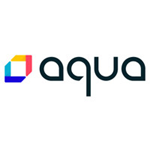Security Breach: The Hack You Helped Create
This episode focuses on a vulnerability within the industrial sector that is essentially a product of progress. The enhanced data sharing capabilities and operational efficiencies that have been realized in establishing an estimated 20 billion device connections in manufacturing enterprises around the globe have come at a price for some.
In the sector’s zeal to push forward with digital transformation plans and realize the benefits of automation, software and data-driven production schemes, all of these connection points offer a soft spot for hackers to probe and pinpoint in launching various types of attacks.
Joining us to discuss this evolving situation and offer some in-depth analysis from his company’s recent report – The API Security Disconnect – is Filip Verloy, Technical Evangelist at Noname Security.
For more information on the work Noname Security does, you can go to nonamesecurity.com.
To catch up on past episodes, you can also check Security Breach out wherever you get your podcasts, including Apple, Amazon and Overcast.



